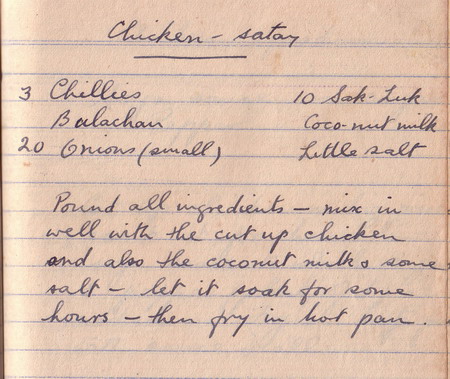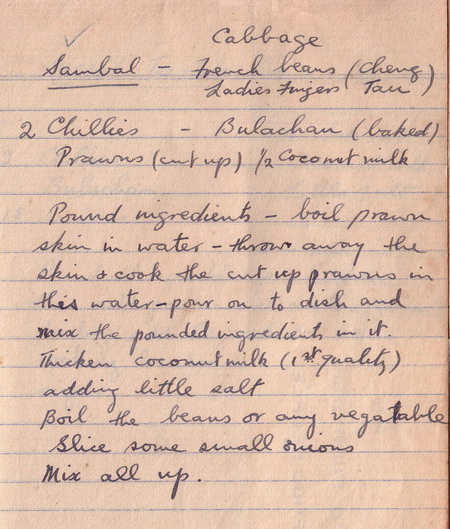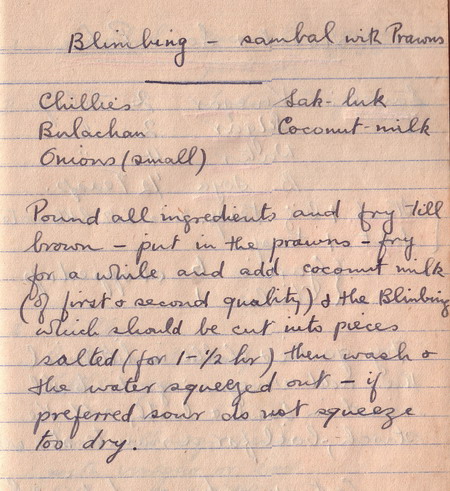Is kaya a custard or a jam? Cracking my head over this semantic question has kept me from posting this recipe — not even that, but mere notes on ingredients — which grandmother noted down. She has listed two sets of quantities, the one on the right originating from her friend, “Mrs S.K.”.
Grandma wrote ‘coconuts’ but experienced cooks would know she was referring to the number of coconuts needed to produce the correct amount of coconut milk (here’s how to do it using grandma’s traditional grater).
According to Wikipedia, the name srikaya, usually shortened to kaya, is derived from ‘the word meaning “rich” in Malay’, and being based on eggs and coconut milk, rich it certainly is! Locals hoping to cut down on their cholesterol intake know that this is one food to reserve for occasional treats only :).
I’ve only ever known this as kaya, and grandmother’s notes are the first time I’ve seen it called sri kaya, which leads me to surmise that the full name was in common usage in the past but has long since been shorted, with the original word now disappeared from popular knowledge.
The use of coconut milk also pandan leaves (in most kaya recipes) points clearly to Southeast Asian origins, either Malay or Indonesian, and the Philippines have their own version as well. Kaya is also very much associated with Straits Chinese (nonya) cooking, which is hugely influenced by Malay and Indonesian cuisine. A popular type of nonya steamed desert is kueh salat, glutinous rice stained with blue colouring from the butterfly pea flower (bunga telang) and topped with kaya.
However, perhaps what Singaporeans think immediately at the mention of kaya is kaya toast, which some overseas friends have told me is their favourite Singapore food :). Kaya toast is found in traditional local coffee shops, known colloquially as kopi tiam, which historically have often been the preserve of the Hainanese community.
Many Hainanese worked in the food industry, often as personal cooks for the colonials as well as wealthy Asians. Bread and toast formed a daily staple in colonial Singapore, and not just amongst the European population. In Hainanese kopi tiam, western bread in the form of charcoal-grilled toast was spread with sweet, rich local kaya.
These days, traditional enterprises have adopted modern business strategies, Ya Kun Kaya Toast being one of them. With humble origins in the 1930s, it is now a franchise in six countries outside of Singapore with a distinct branding leveraging off its long history and a nostalgia for the old days.
Grandma’s notes won’t help you much if you don’t already know how to make kaya, so this webpage describing someone else’s grandmother’s kaya method might prove very useful. Although I’ve never made kaya myself, I’ve heard it requires plenty of patient stirring to get a good consistency. Nowadays, many people use a microwave shortcut, a slow cooker or even the jam function on a bread maker. What’s also becoming more popular now is a vegan, eggless pumpkin version that is not only healthier but much easier to prepare.
So — custard or jam? well, actually I don’t think it matters :).







